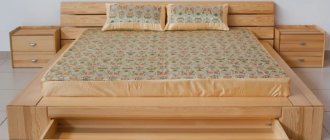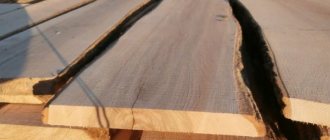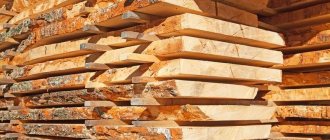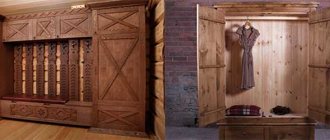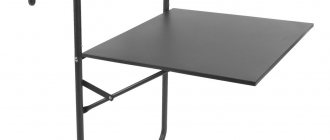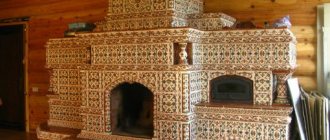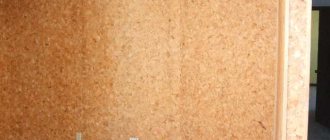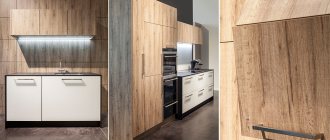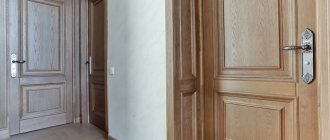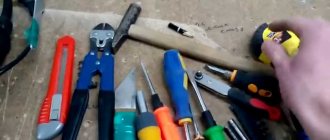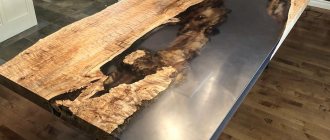Every person has the inherent desire to have his own business, and not to be an employee. After all, in this way, you can not only have a decent income, but also do what is closest to your liking.
When choosing a direction for developing your own business, you should pay attention to the production of furniture panels, as it is in great demand in the furniture industry, in the manufacture of decorative elements.
To open a small wood processing shop, you need to prepare the premises, find regular wholesale buyers, purchase quality materials, hire employees, and the like.
Scope of application of furniture panels
The product is a safe material, which allows it to be widely used in factories as furniture semi-finished products for the manufacture of facades, panels, doors, window sills, cabinets, and shelving.
In construction, panels are used when installing stairs:
Furniture board
- steps;
- balusters;
- railings;
- sites;
- stringers.
In the interior of children's rooms, kitchens, corridors, walls and ceilings are decorated with wooden panel panels. The dimensions of the furniture board are on average from 20 to 40 mm thick; it can vary depending on the wishes of the customer.
Final processing
Shields are made in such a way that they are not only strong and durable, but also quite attractive. To do this, attention is paid to some finishing stages, which include special processing. To do this, follow these steps:
- a preliminary grinding procedure is carried out. For these purposes, it is recommended to use a standard belt sander. It is necessary to insert special sandpaper into it, and it must have large fractions, since the initial processing is being done. It allows you to eliminate large defects and differences remaining on the surface after the process of creating the shield. You must act carefully, and also carry out the process in consistent and even lines;
- secondary processing - involves the use of a flat grinder. It ensures the removal of the slightest differences, irregularities and other defects present on the surface of the wooden furniture panel. Also, due to this process, lint is removed from the surface. It is recommended to pre-moisten the base with a small amount of water, and start sanding only after the structure has completely dried.
After competently implemented processing, it is possible to use the resulting panels to create a variety of tables or shelves, bedside tables and other furniture. They can be used to form doors or coatings that have high strength, reliability and durability.
Thus, furniture panels are quite popular and in demand designs. They are used to create numerous interior items. If you wish and have the time and opportunity, you can make such shields with your own hands. For this, different materials are used, represented by different types of wood. They undergo special processing and are then glued together using a special technology. This ensures a truly high-quality, durable and attractive shield that can be used for a variety of purposes. To give it high strength and reliability, we must not forget about the special processing performed after the procedure for creating the structure.
Primary processing
Secondary
Softwood processing technology
The raw material for the production of wooden panels is unedged and edged boards from coniferous or hardwood species - ash, birch, oak. The most commonly used material is from coniferous species (pine, spruce), it is cheap and can be processed.
The shield is a worthy replacement for solid wood, thanks to more efficient use of the material, while maintaining quality characteristics, but at a low cost.
Technological operations, as well as control during the manufacturing process, must be strictly observed so that the resulting product is of high quality, meets the necessary requirements and standards, and also has an aesthetic appearance.
In the manufacture of boards, several types of boards are used, which makes it possible to expand the price range for the finished product by breaking it down by grade.
Types of furniture panels
Depending on the area in which the shields will be used, they are made single-layer or multi-layer.
In the first option, bars, slats or boards are glued along the wood grain, resulting in a board with a thickness of 15 to 60 mm.
The multi-layer product has two front sides and several odd inner layers. They are laid out symmetrically in thickness, and the total height of the lamella is often 70–80 mm.
Stages of production of glued furniture panels:
Scheme for the production of furniture panels
- drying lumber in a special chamber;
- processing (trimming) and sorting of workpieces;
- identifying defective areas and cutting the workpiece to width;
- processing according to specified parameters with simultaneous removal of erroneous zones;
- connecting pieces along the length, applying glue;
- product configuration;
- elimination of irregular seams;
- final calibration and grinding;
- cutting finished material to specified dimensions.
Selection and preparation of materials
Furniture panels are made from high quality edged or unedged boards. For this purpose, coniferous trees (spruce, pine), as well as hardwood trees (ash, oak, birch, beech) are used.
Furniture board is an excellent alternative to natural solid wood, but costs much less. For its production, different types of boards are used (solid, jointed), which makes it possible to produce products in different price segments.
To make a high-quality glued board you need:
- choose wisely where to harvest lumber;
- use a high-quality sawmill, since cutting the board is an important stage of processing;
- use modern steam dryers;
- Store wood in a well-ventilated, dry area with low humidity.
Conditions for starting a business producing furniture panels
The demand for this type of product is quite high; the production of wooden panels is a good idea for creating your own business. To assemble and sell small wholesale quantities of goods, it is more expedient to open a small workshop where longitudinal cutting and gluing of lamellas will be carried out.
But a profitable option would be to create a facility near a forest area where trees are cut, and there are also sawmills for producing boards and timber. But working with imported raw materials will be a profitable business.
To do this, you need to rent a warehouse or workshop, the structure of which includes:
Furniture panels production line
- Administrative premises.
- A warehouse with timber and, separately, finished products and an area where the necessary equipment will be installed.
- The size of the workshop space often depends on the dimensions of the machine park. To organize your own business, you need to draw up a plan and calculate all the risks.
It is easy to rent equipment for production or take out a loan and purchase used but operating machines.
Required Tools
Do-it-yourself furniture panel gluing is done using standard tools. Usually they are available to every man who prefers to do numerous housework on his own. Therefore, only the elements are prepared:
- planing machine that ensures optimal preparation of wood;
- a tool for joining and gluing individual wooden blocks;
- belt type sander;
- construction level, allowing you to get really even panels;
- coarse sandpaper;
- flat sander.
These tools will be enough to make a shield, so no expensive devices will be needed anymore.
Technical equipment and its features
To produce furniture panels, the following industrial equipment is required:
- Drying chambers for wood preparation - there are vacuum, convective, and aerodynamic types.
- Universal woodworking machines - units from Winner Blazer and Warrior have proven themselves.
- Double-sided thickness gauges for lamellas of domestic production, as well as Ostermann, GRIGGIO.
- Weights for gluing the board: fan - from RAUTEK, INDUK, pneumatic - Stromab.
Working with the cursal device
As well as installations for optimizing end cutting, you can obtain a minimum of waste. There are walk-through machines - for piece processing from Quadro and devices with a Cursal pusher - for obtaining a bunch of boards.
Equipment for splicing along the length allows you to connect short workpieces into lamellas; this feature makes it possible to transform defects into working material. Automatic, semi-automatic lines, Beaver and OMGA tenoning machines.
Adhesive application systems are used on flat surfaces to distribute the adhesive evenly. For gluing timber, the composition is applied directly on the KM-250 machine.
Format cutting machines are designed for cutting materials lengthwise and crosswise. There are: with a ball carriage - Ostermann, a roller carriage - FILATO, format-cutting centers - SELCO.
Additionally, during production, machines are used for artificial aging or brushing of wood. To obtain a unique texture of furniture boards, special abrasive brushes or sanding drums GRIGGIO and domestic models - from - KS200, KS1 - are used.
Element gluing technology
After all the bars have been prepared, you can begin gluing them directly, which will ensure a high-quality shield. This procedure is also divided into successive stages:
- a device is selected that makes it possible to glue the bars together, and it must be even, and usually a regular sheet of chipboard is used for this;
- strips are fixed along the edges of the sheet, and their height depends on the parameters of the prepared bars;
- bars are laid between these slats, and they should fit tightly to each other and an attractive pattern should be formed from them;
- if there are cracks, they can be easily eliminated with a standard jointer;
- then the bars are glued together, for which different types of glue intended for wood are used, but the use of PVA glue is considered optimal;
- the entire surface consisting of bars is completely spread with glue, and it is important that the product is evenly distributed over the surface;
- the lubricated elements are pressed tightly against each other;
- two more such planks are laid on the slats, fixed to the chipboard sheet, after which these elements are connected with self-tapping screws, and this is necessary to prevent the resulting shield from bending;
- the resulting blank is left for about an hour, after which the shield is released and left for a day.
Thus, having figured out how to glue elements to obtain a furniture panel, this process will not require significant effort. The procedure is easily carried out on your own, and the result is structures that are effectively used to create numerous furniture, doors or even full-fledged coatings, characterized not only by high strength, but also reliability, as well as an attractive appearance.
Fastening the slats
Lay out the bars
Gluing the bars
We lay two more planks
Leave to dry
Advantages and applications
Products from furniture panels
Panels are widely in demand in furniture production, as a finishing material for interiors. Due to the textured texture of wood, the products are used for the production of both standard furniture and for individual orders.
Despite a fairly large range of other materials (chipboard, MDF), products made from laminated veneer lumber are in demand due to many advantages.
Furniture panels, unlike solid wood, do not shrink, so the dimensions remain the same over time. This feature allows you to significantly save on the operation of the material.
Wood paneled bedroom wall
Panel products are environmentally friendly, so they are used as decoration for children's rooms and for the manufacture of teenage and other furniture. The technology for manufacturing wooden panels allows for efficient use of wood, which significantly saves money and helps save forests from large areas of deforestation.
The resulting material acquires a decorative appearance by imparting a beautiful texture to the wood using a brushing (grinding) operation, which allows the use of furniture panels for finishing various rooms.
The ability to produce furniture products of any size and thickness, depending on the customer’s wishes. The production of furniture panels is a good idea for a business project; there is a constant demand for such products, especially for high-quality and relatively inexpensive products. Wood parts are widely used by craftsmen both for the manufacture of furniture and for finishing premises, also due to their affordable price.
Modern production of laminated panels is a business with a short payback period and constant profit. The initial costs will be returned by the owner within the first 6 months, and a wide material base will allow this figure to be halved.
Manufacturing rules
As soon as the tools are completely ready for the planned work, the actual production procedure begins. How to make a furniture panel? This process is not considered too complicated, but in order to eliminate possible errors or problems, it is recommended to study the correct instructions in advance. To do this, follow the following steps:
- Initially, wooden boards are cut into separate bars of the required size, and it is important to make the cuts in such a way that they are strictly at right angles;
- The presence of any unevenness or other defects is not allowed, since in this case it will not be possible to properly glue the furniture board together;
- if minor distortions are detected, they can be eliminated with a conventional planer;
- An important point in production is the combination of the resulting blanks, since they must be the same in texture and color, as well as in other important parameters;
- After selecting the elements, they are marked so that during the gluing process there are no difficulties with their correct location.
To ensure that all stages of the process are completed taking into account the main nuances, it is recommended to watch the training video in advance.
Making bars
We process with a machine
We mark each block
Investment size
As is clear from the descriptions of the previous sections, the size of investments is directly proportional to the scale of the business being organized. The future owner of furniture panel production must provide funds for the following expenses:
- renting premises (it makes sense to include in the estimate the amount for a one-time payment of 3 to 6 months of rent) and preparing it for business (repairs, installation of a forced ventilation system, gates, checkpoints, etc.);
- purchase of equipment;
- purchase of raw materials for six months;
- paperwork;
- wages to employees (for 3-6 months);
- advertising and promotion of new brand products (creating a website, printing booklets and posters, placing advertisements in specialized media, etc.);
- unforeseen expenses (10-30% of the prepared estimate).
To save money, it makes sense to start operations with an incomplete staff, and when a stable sales market appears, attract new employees.
